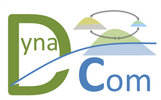Prof. Dr. Helmut Hillebrand
Institute for Chemistry and Biology of the Marine Environment (» Postal address)
DynaCom

Spatial community ecology in highly dynamic landscapes: from island biogeography to metaecosystems
The research unit “Spatial community ecology in highly dynamic landscapes: from island biogeography to metaecosystems” [DynaCom] is deeply rooted in ecological frameworks such as the equilibrium theory of island biogeography and metacommunity models. DynaCom takes an explicit trait-based food-web perspective on spatial dynamics to achieve three overarching objectives: (O1) to generate a multidimensional trait space for spatially structured food-webs (meta-foodwebs), (O2) to extend the trait-based characterization of spatial communities to dynamic landscapes that experience strong stochastic disturbances, and (O3) to generalize this information across insular systems from regional to global scales. In Phase 2, DynaCom will focus on the establishment and functioning of trait-based multitrophic metacommunities under environmental forcing (O2). All subprojects contribute specific information to generally test how disturbed or rapidly changing environmental conditions shift the trait composition in communities towards nested subsets (hypothesis H1). Across organisms, we will test how spatial and temporal variation in trait composition allows for higher stability of local composition and functioning (H2). Finally, we will assess how movement traits alter the predictability of the composition during community assembly and mediates between spatial and local stabilization of emergent properties and functions (H3). The German Wadden Sea remains the core field site, as it features strong rhythmic and stochastic dynamics in abiotic conditions and allows an integrative analysis of marine and terrestrial food web compartments.

